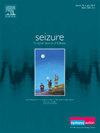耐药性癫痫早期婴儿(小于 12 个月)手术临床疗效和安全性的初步观察。
IF 2.7
3区 医学
Q2 CLINICAL NEUROLOGY
引用次数: 0
摘要
目的调查耐药癫痫婴儿(小于12个月)手术的临床效果和安全性,明确手术适应症,选择合适的手术方法:这是一项回顾性分析,对象是在深圳市儿童医院癫痫中心接受癫痫手术并随访6个月以上的耐药性癫痫婴儿。临床数据包括病因、发作类型、手术方法、术前辅助检查、病理结果以及术中和术后并发症。临床结果根据术后癫痫发作频率、抗癫痫药物(ASMs)使用情况和神经认知发育情况进行评估。对术中失血量、手术时间、术后并发症和重症监护时间进行了评估,以评估癫痫手术的安全性。通过单变量分析和逻辑分析来探讨影响预后的因素:共为44名患有耐药性癫痫的婴儿实施了癫痫手术,其中7名患者接受了两次手术。癫痫发作的年龄从 1 天到 11 个月不等(中位数为 1 个月,四分位数间距(quartile range,quartile range)为 2):病程为 1-11 个月(中位数:4 个月,IQR:2-7),手术年龄为 6.9 ± 3.6 个月。23名患者接受了半球切除术(52.3%),2名患者接受了半球次全切除术。五名患者接受了多叶切除术,五名患者接受了额叶切除术,其余九名患者接受了病灶切除术。手术时间为7.5 ± 2小时。术中失血量从50毫升到1800毫升不等(中位数:275毫升,IQR:200-500),所有患者术中输血0.5-6 U(中位数:1.5 U,IQR:1.5-3)。重症监护室的住院时间为 1-4 天(中位数:1 天,IQR:1-2)。术后并发症发生率为 13.6%(6/44;2 例脑积水伴颅内感染,2 例孤立性脑积水,2 例硬膜下血肿)。除一名患儿术后约一年死于严重肺部感染和一名患儿术后失去随访机会外,其他病例均接受了10-49个月的定期随访(中位数:30个月,IQR:16.5-36)。术后,患者接受了 0-3 次 ASM 治疗(中位数:1 次 ASM,IQR:0-2 次);27.9%(12/43)的患者停止服用 ASM,51.2%(22/43)的患者减少了 ASM 次数。76.7%的患者(33/43)在最后一次随访时达到了恩格尔Ⅰ型。在 17 例有完整发育商随访数据的病例中,术前和术后的发育商平均值分别为 28.8 ± 21 和 43.2 ± 20.1,差异有统计学意义(P<0.05)。本文章由计算机程序翻译,如有差异,请以英文原文为准。
Preliminary observation on clinical outcome and safety of surgery in early infants (<12 months) with drug-resistant epilepsy
Objective
To investigate the clinical outcomes and safety of surgery in infants (< 12 months of age) with drug-resistant epilepsy, clarify surgical indications, and select appropriate surgical methods.
Methods
This was a retrospective analysis of infants with drug-resistant epilepsy who underwent epilepsy surgery and were followed up for > 6 months at the Epilepsy Center of Shenzhen Children's Hospital. Clinical data included etiology, seizure type, surgical procedure, preoperative auxiliary examinations, pathological findings, and intraoperative and postoperative complications. Clinical outcomes were assessed based on postoperative seizure frequency, antiseizure medicines (ASMs) use, and neurocognitive development. Intraoperative blood loss, operative duration, postoperative complications, and duration of intensive care were evaluated to assess the safety of epilepsy surgery. Univariate and logistic analyses were performed to explore the factors influencing prognosis.
Results
Epilepsy surgery was performed on 44 infants with drug-resistant epilepsy, including 7 patients who underwent two operations. The age of seizure onset ranged from 1 day to 11 months (median: 1 month, interquartile range (IQR): 0.1–3.8), the disease course was 1–11 months (median: 4 months, IQR: 2–7), and the age at surgery was 6.9 ± 3.6 months. Twenty-three patients underwent hemispherectomy (52.3 %), and two underwent subtotal hemispherectomy. Five patients underwent multilobar disconnection, five underwent frontal lobotomy, and the remaining nine underwent focal resection. The surgical duration was 7.5 ± 2 h. Intraoperative blood loss ranged from 50 to 1800 ml (median: 275 ml, IQR: 200–500), with all patients receiving an intraoperative blood transfusion of 0.5–6 U (median: 1.5 U, IQR: 1.5–3). The intensive care unit stay was 1–4 days (median: 1 day, IQR: 1–2). The postoperative complication rate was 13.6 % (6/44; two cases of hydrocephalus with intracranial infection, two isolated hydrocephalus, and two subdural hematomas). Excluding one child who died of severe lung infection approximately one year after surgery and one child lost to follow-up after surgery, all other cases were regularly followed up for 10 –49 months (median: 30 months, IQR: 16.5–36). After surgery, patients were treated with 0–3 ASMs (median: 1 ASM, IQR: 0–2); 27.9 % (12/43) stopped taking ASMs and 51.2 % (22/43) had reduced number of ASMs. Engel I was achieved in 76.7 % (33/43) of the patients at the last follow-up. In 17 cases with complete developmental quotient follow-up data, the preoperative and postoperative developmental quotient means were 28.8 ± 21 and 43.2 ± 20.1, showing statistically significant differences (p<0.05)
Significance
Epilepsy surgery in infants under 12 months of age is safe and effective. Early preoperative evaluation is crucial for identifying structural lesions and suitable candidates for surgery among infants with drug-resistant epilepsy. The timeliness of surgery is essential for achieving favorable clinical outcomes.
求助全文
通过发布文献求助,成功后即可免费获取论文全文。
去求助
来源期刊

Seizure-European Journal of Epilepsy
医学-临床神经学
CiteScore
5.60
自引率
6.70%
发文量
231
审稿时长
34 days
期刊介绍:
Seizure - European Journal of Epilepsy is an international journal owned by Epilepsy Action (the largest member led epilepsy organisation in the UK). It provides a forum for papers on all topics related to epilepsy and seizure disorders.
 求助内容:
求助内容: 应助结果提醒方式:
应助结果提醒方式:


